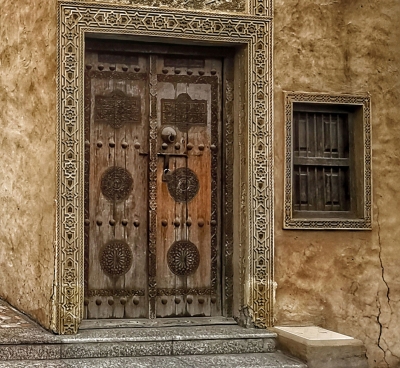


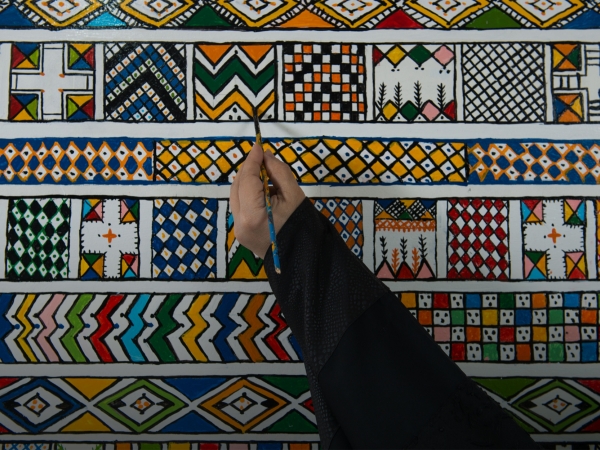
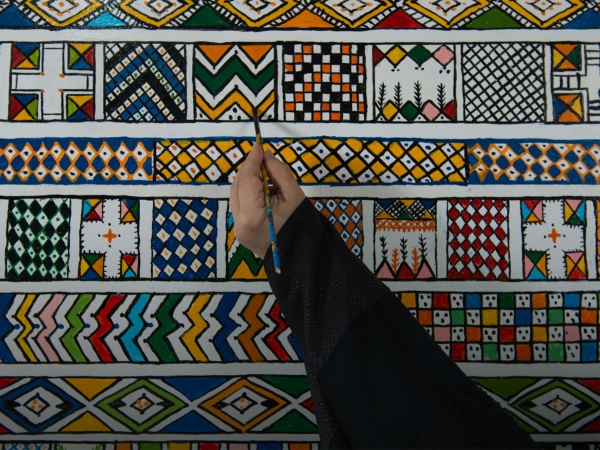
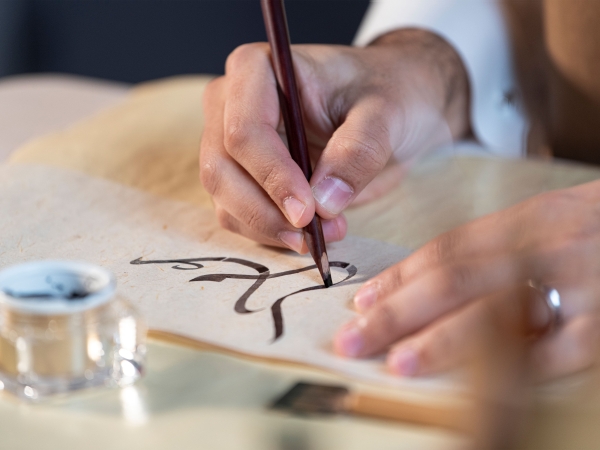
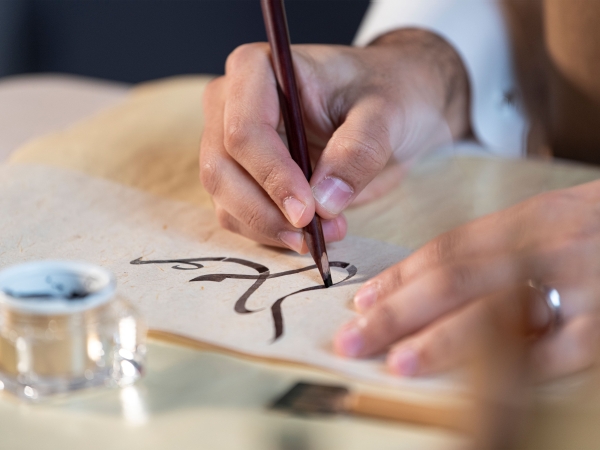


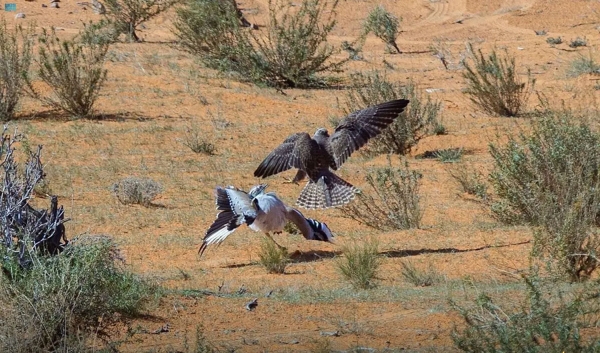
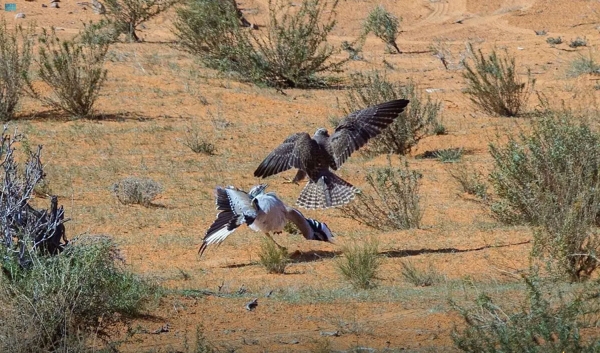
The Kingdom of Saudi Arabia has registered a number of intangible cultural heritage elements on the United Nations Educational, Scientific and Cultural Organization (UNESCO)'s Representative List of the Intangible Cultural Heritage of Humanity. They are:
Falconry (al-Bizarah)
It was registered in 2011 as the art of breeding, training, and hunting with birds of prey, in collaboration with several Gulf, Arab, and international countries. Falconers have passed down this art through generations. It is practiced in groups that may travel for days or weeks. Saudi Arabia organizes annual festivals and meetings to celebrate this art.
Al-Ardah Al-Najdiyah
In 2015, Al-Ardah Al-Najdiyah (Saudi Ardah) was added to the list. This art form is performed during celebrations, social events, and holidays across Saudi Arabia.
Arabic Coffee
In 2015, Saudi Arabia, along with the United Arab Emirates, Qatar, and Oman, registered Arabic coffee. A symbol of hospitality and generosity in Saudi society, Arabic coffee is a staple at all gatherings on all occasions. In 2022, the Saudi Ministry of Culture officially renamed Arabic coffee as "Saudi coffee."
Al-Majlis
In 2015, Saudi Arabia, along with the United Arab Emirates, Qatar, and Oman, registered 'Al-Majlis.' This communal gathering place is a cultural element in Saudi society. It is characterized by its spaciousness with floor carpets, cushions distributed throughout, and a stove for preparing coffee. Locally, Al-Majlis is known for its open-door policy, signifying the generosity of its host.
Al-Mezmar
In 2016, 'Al-Mezmar art' was registered. This traditional group performance, practiced west of Saudi Arabia, is featured in family and national celebrations and events. The performance involves two rows of men moving in rhythm to drums and clapping, with each row led by two men who twist sticks in quick, circular motions.
Al-Qatt Al-Asiri
In 2017, AL-Qatt Al-Asiri art was added to the list. This art form, originating from Aseer Province, features hand-drawn geometric patterns and vibrant colors used to engrave and decorate house walls.
Date Palm
In 2019, Saudi Arabia, in collaboration with fourteen Arab countries, registered the date palm as part of the intangible cultural heritage. Date palm in Saudi Arabia are not only a source of handicrafts and livelihoods but also a significant element in customs, traditions, and social and cultural practices.
Traditional Weaving of Al-Sadu
In 2020, Saudi Arabia, jointly with the State of Kuwait, registered the traditional weaving of Al-Sadu element. This ancient art involves weaving brightly colored textiles with unified artistic patterns, used to decorate homes in Saudi Arabia. Al-Sadu was also used in the design of the G20 Summit logo when Saudi Arabia hosted the event in 2020.
Arabic Calligraphy
In 2021, Arabic calligraphy was inscribed in a joint file with fifteen other countries. As an inherited artistic practice for writing in Arabic, Arabic calligraphy in Saudi Arabia is an art deeply embedded in Saudi culture, serving as a symbol of Saudi Arabia’s identity. It is widely used in daily life for both writing and reading interactions in Arabic.
Saudi Khawlani Coffee
In 2022, Saudi Arabia inscribed the skills and knowledge related to the cultivation of Saudi Khawlani coffee on the representative list. Cultivated in the southern provinces of Saudi Arabia for nearly eight centuries, Khawlani coffee is tied to the region’s customs, poetry, chants, and economy.
Al-Heda'a
In 2022, Saudi Arabia, in collaboration with the Sultanate of Oman and the United Arab Emirates, registered al-Heda'a (oral tradition of calling a flock of camels), a traditional form of oral expression and a means of communication between camels and their herders.
Harees
In 2023, Saudi Arabia, in partnership with the United Arab Emirates and the Sultanate of Oman, inscribed Harees dish: know-how, skills and practices. It is a popular dish in Saudi Arabia and certain Gulf countries. The practices of preparing and cooking Harees are rooted in several Saudi provinces.
Engraving on Metals
In 2023, Saudi Arabia registered the arts, skills, and practices associated with engraving on metals (gold, silver, and copper) on the Representative List of the Intangible Cultural Heritage of Humanity in a joint file with nine other countries.
Taif Roses
In 2024, Saudi Arabia inscribed "cultural practices related to Taif Roses" on the list. Taif roses are a cultural and social element associated with the life of the people of Taif Governorate, with their cultivation and production being a daily practice that dates back centuries.
Henna
In 2024, customs associated with henna designs were added to the UNESCO list alongside fifteen other countries. Henna serves as a cultural symbol embodying joy and optimism. In Saudi Arabia, the term "henna" refers to the intricate art of engraving designs on the hands and feet, a tradition linked to marriage ceremonies in certain Saudi provinces and traditionally practiced by women.
Semsemiah
In 2024, Saudi Arabia, in collaboration with Egypt, registered the Semsemiah instrument on the UNESCO list. A vital part of the cultural identity of Saudi Arabia’s coastal communities, it features in social gatherings, including weddings and cultural festivals.
Related quizzes

